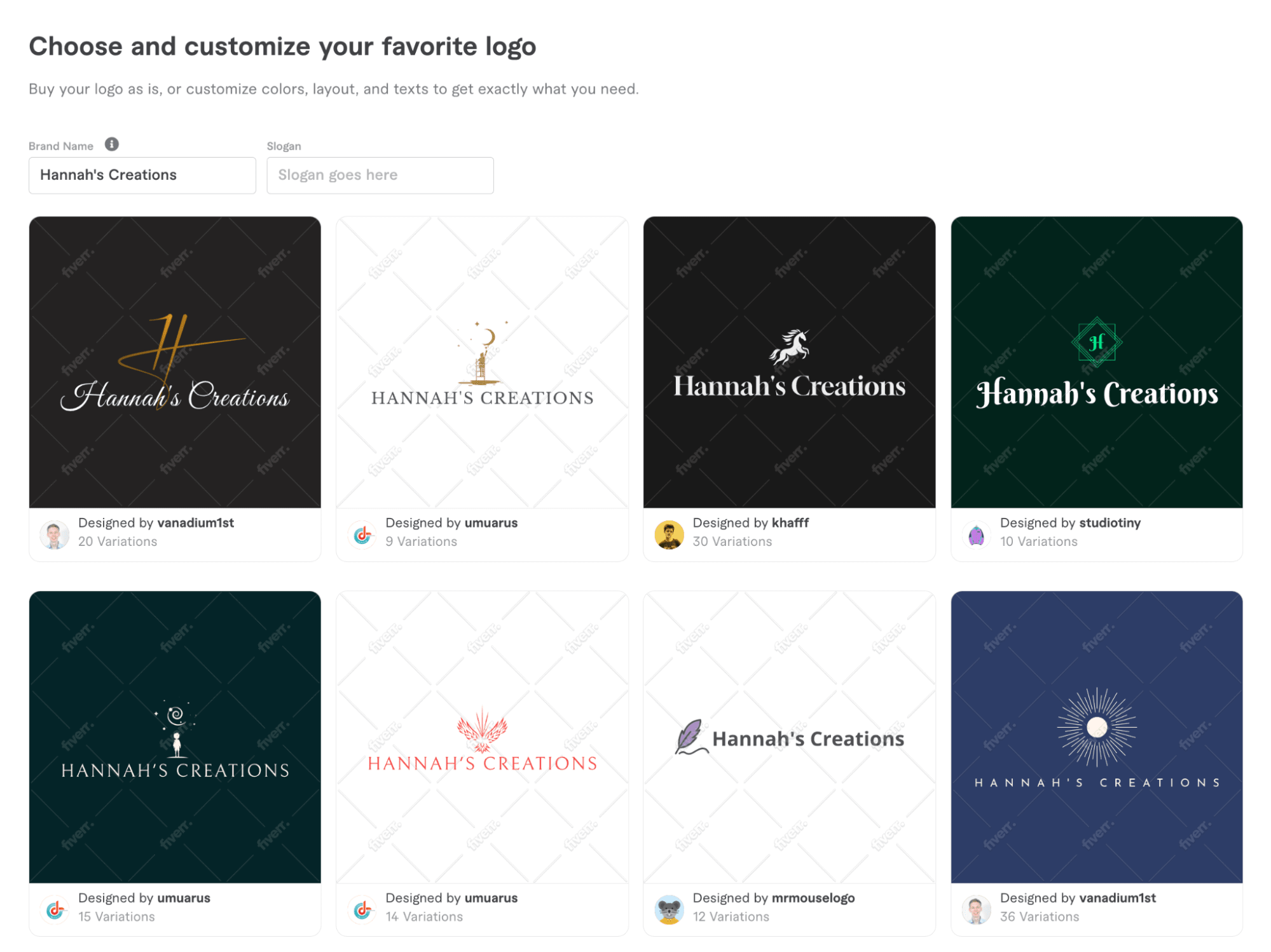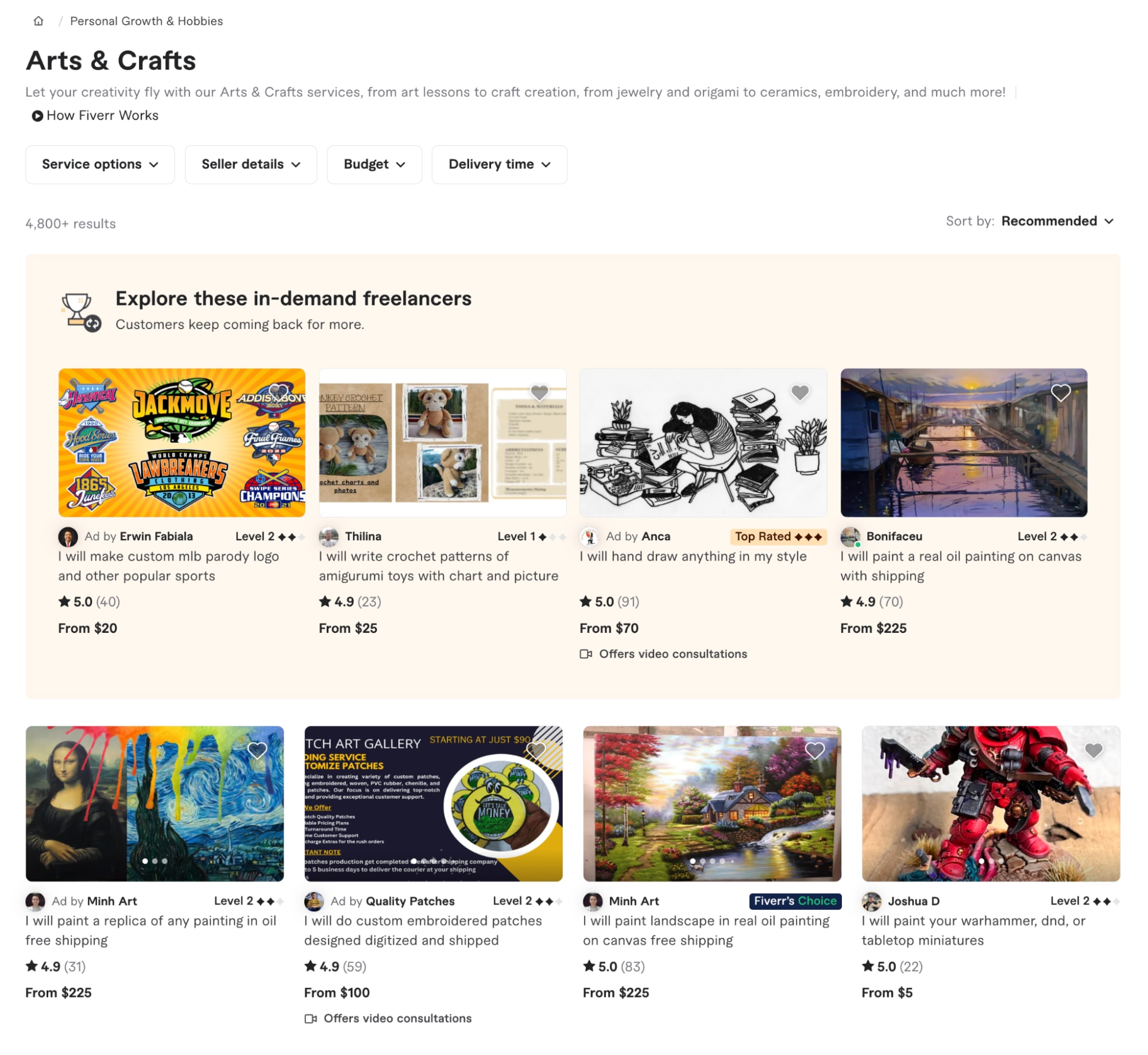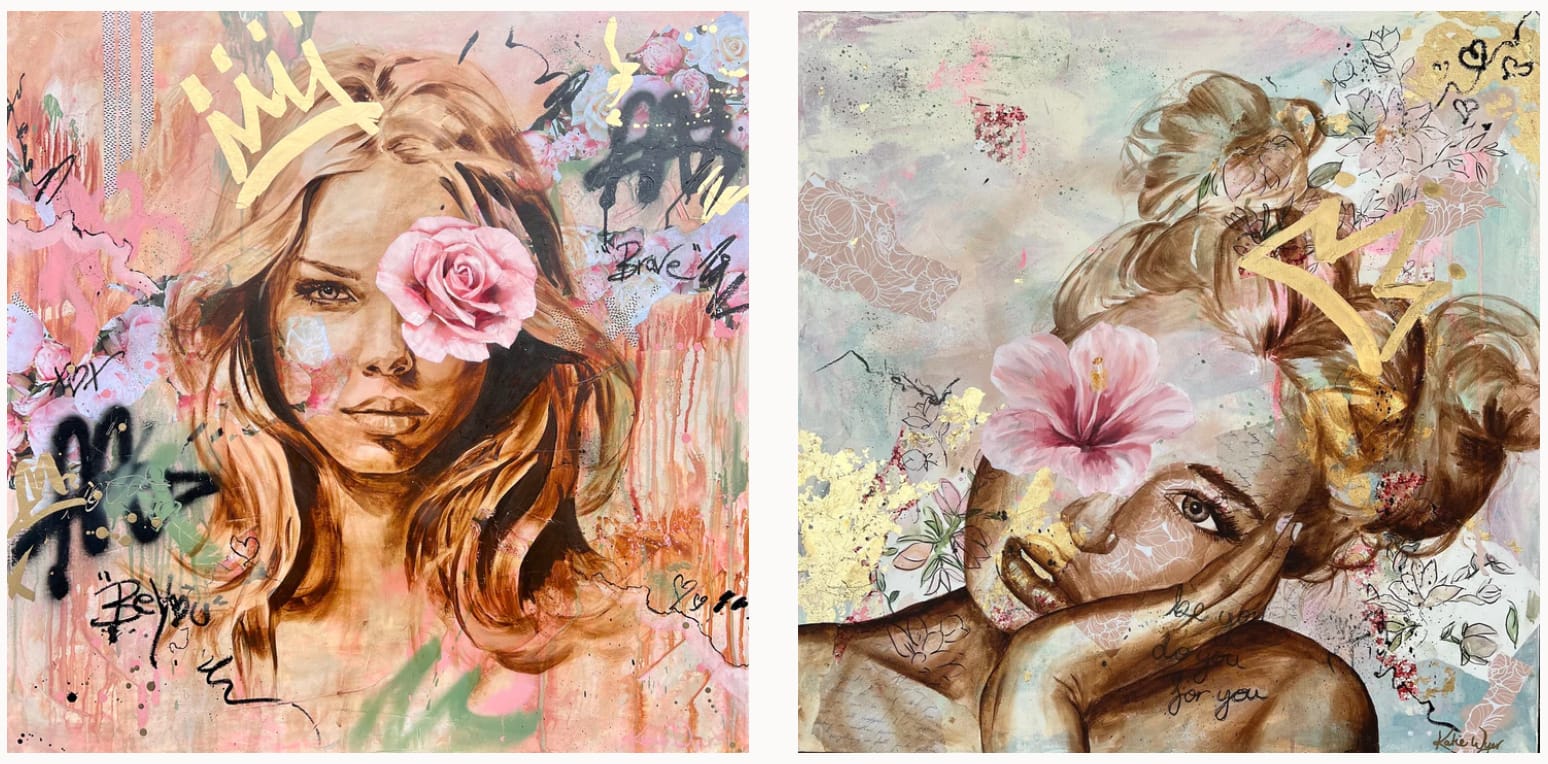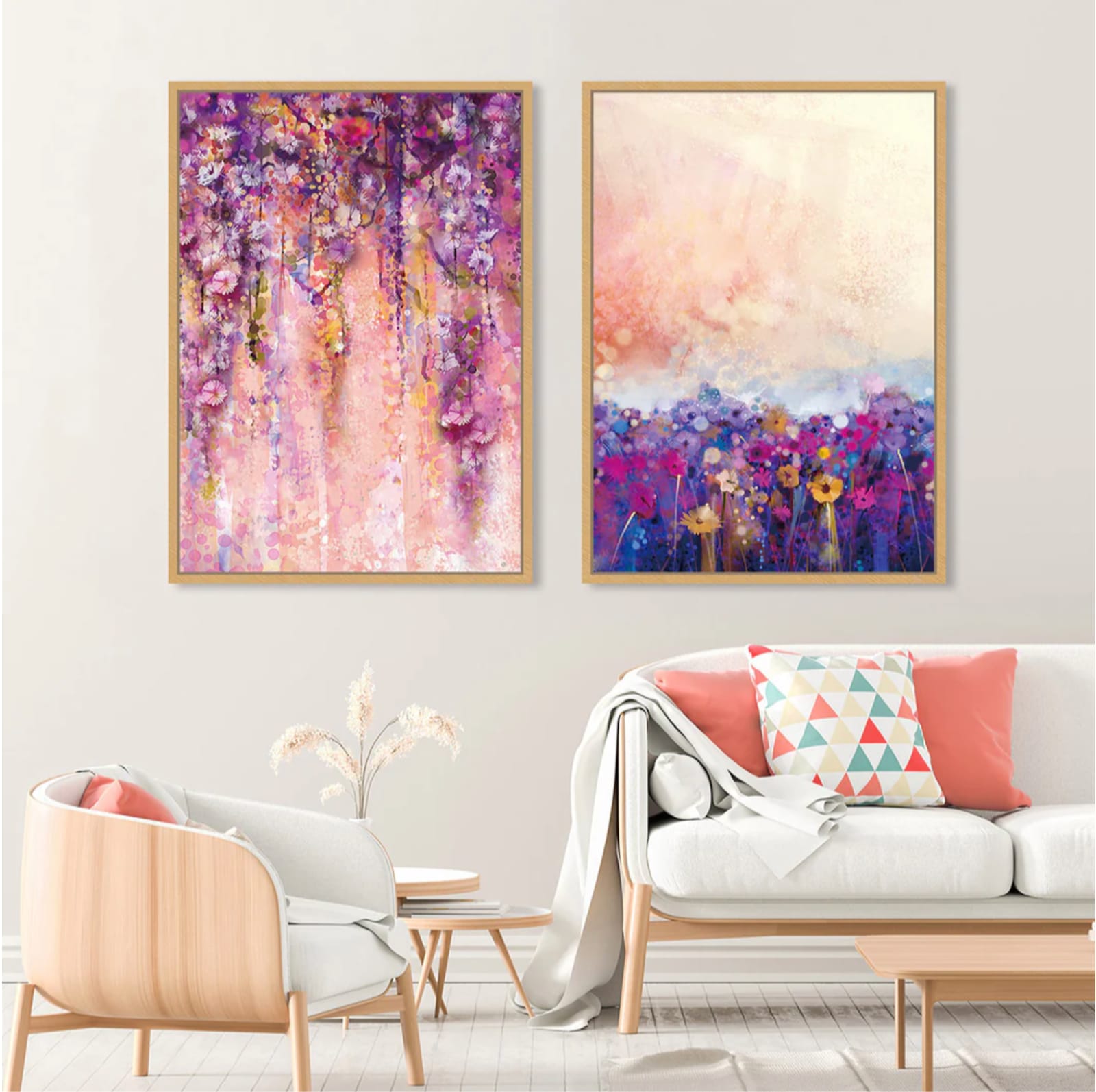How To Sell Artwork Online in 2025
Discover essential steps to successfully sell your art online, from choosing your business model to marketing strategies and managing financial obligations.
 October 23, 2024
October 23, 2024 8 minute reading
8 minute reading
The online art market is booming, with more artists turning their passion into profit through digital platforms. Yet, navigating the complexities of selling art online is often challenging.
Fortunately, plenty of opportunities exist to promote and sell your work online. This is a bustling industry with the potential to earn money while doing something you love. People can’t get enough of art, and the industry has a global sales value of around 65 billion dollars.
It doesn’t matter what type of artwork you’re creating, or if you’re a reseller for someone else. We’ve got you covered. Keep reading to discover everything you need about growing a virtual art business.
How to sell art online
Embarking on your journey to sell art online can be exciting and lucrative, but it requires careful planning and strategy. To help you navigate this process successfully, we've outlined 14 essential steps to consider before launching your digital art business:
1. Decide what art to sell and how to sell it
The first step is deciding what art type you want to sell. If you're creative, your goal may be to sell original artwork. Whether digital art, oil paintings, illustrations, or NFTs — you probably already have a favorite.
You don't have to stick to one product. Originals come with a higher return, but they take time, and you don’t want to feel like your art is stuck on a production line. By selling a mix of one-off pieces and reproductions, your own art can be accessible to more people.
Take inspiration from artists like Katie Wyer, who sells original mixed media paintings alongside canvas and fine art prints. This approach caters to budgets ranging from under $50 to thousands, generating passive income for Katie without constantly creating originals.
Because you're operating online, there are even more options. Your artwork can go beyond the page and be printed on t-shirts, mugs, hats, mouse pads, and more.
2. Choose your business model
The second step is to create a business plan and research your target audience. Who will be buying your art, and where will they find you? You could sell via your own website, art marketplaces like Saatchi Art or Artfinder, or online galleries.
Here are some questions to consider:
Will you start an online business or an external space such as a boutique?
Will you sell your own designs, the work of another artist, or a mix of both?
Are your pieces original, or will your range include reproductions?
Will you only sell digital files, or will you need to research printing and shipping?
Are you interested in selling licenses to curators who want to sell your art?
Some business owners sell art as a side hustle until their following grows enough to make it full-time.
Others may teach virtual art lessons or sell graphic design services on Fiverr to supplement their income. Alternatively, you can use a print-on-demand service to sell items featuring your designs.
3. Register your business
Registering your online art business makes it a legitimate and professional operation. Proper registration ensures legal compliance and provides credibility to your customers and potential business partners.
While the specific requirements may vary depending on your location, you'll need to address several key aspects.
Licenses and permits: If you sell work by another artist, you'll need a license. Research any special permits required for selling certain types of art (e.g., antiques, culturally significant pieces).
Employer identification number (EIN): Register your business to get a unique EIN for tax and banking obligations.
Business bank account: Separate your personal and business finances.
Business structure: Decide whether to form your business as a sole proprietorship or limited liability corporation (LLC).
Taxes: Register to pay taxes, such as income and sales taxes. If selling globally, be aware of potential international tax obligations.
💡 Tip: Hire a business registration expert to set up your business and guarantee you meet all federal and state requirements.
4. Create high-quality images of your art
When art is displayed in a gallery, patrons can get a feel for the size, color, and texture. When selling online, you must be creative so customers can still visualize how it will look in their homes.
Good photography is the key to showcasing your designs. High-quality images can help attract art buyers who might otherwise overlook your work.
Experiment with lighting and add other elements, such as a bed, dining table, or sofa. Styling your artwork shows the piece's scale and how it can look with other household items.
If you’re having trouble snapping the perfect shot, hire a photographer with experience presenting artwork. You can also ask previous customers if they can share photos of your art on their wall.
Before creating an online listing, you'll need a high-quality photograph or scan of your artwork. Each platform and online gallery has different rules, so find out if specifications, such as file size and type, are required.
5. Find a printer for your art
Unless you're sticking to handmade pieces, you'll need to find a reliable printing partner. The quality of prints can vary significantly between providers, so research and test samples before committing to a large order.
There are two main printing options.
A local print shop: This is where you can meet your printers in person and do real-life quality checks. You’ll have to manage packaging and shipping, and the printer may have higher minimum order requirements.
Print-on-Demand (POD) services: These companies handle order processing, printing, and shipping. They also integrate with e-Commerce platforms like Shopify and Etsy, so you don’t have to hold any inventory.
Whichever option you choose, always remember to:
Get samples printed before ordering in bulk
Check for color accuracy and print quality
Consider turnaround times and shipping costs
Review customer feedback and service reliability
By carefully selecting your printing partner and consistently monitoring quality, you'll be well on your way to delivering beautiful art prints to your customers. If you’re selling digital downloads, you won’t need to worry about printing or shipping.
6. Build your brand
Your brand should tell a story, starting with your business name.
If you’re the creator, you’ll be the face behind the art — and sharing your journey can make your collections come to life. In this case, using your real name or initials can personalize your brand. Alternatively, let the art speak for itself and choose something unique. Do your research to ensure your preferred business name and domain name are available.
Next, create a logo that reflects your artistic style. You can design it yourself with a DIY logo maker or hire a logo designer.

For retro art, consider geometric shapes and nostalgic fonts. For modern, monochrome work, a simple black-and-white logo might suit.
Apply your logo consistently across various platforms:
Business website
Social media profiles
Printed materials (business cards, flyers)
Event signage
Merchandise branding
Maintain consistency in colors and theme throughout your branding. This cohesive approach will help establish a strong, recognizable identity for your art business.
📚 Read more: What is a brand style guide and how do you create one
Kate Pullen is a letterer and illustrator from Melbourne, Australia. Kate has a unique style, with bright and bubbly designs in fashion, book covers, and packaging design.
Instagram is her online portfolio, where she showcases her work. It complements her website and is consistent with her brand.
Leverage social media platforms like Instagram and Pinterest to showcase your work. Take advantage of marketing tools such as search engine optimization (SEO), email marketing, and social media ads to grow your brand over time.
7. Set prices for your products
Use a tiered approach to set prices for your art. Consider different price points for originals, prints, digital files, and miscellaneous items. For example, an original acrylic painting might fetch a different price than a print.
Say an original costs $500, you might charge $150 for a print, $50 for a digital file, and $10 for a greeting card.
Before setting prices, create a budget considering your expenses:
Materials (canvases, paints, brushes)
Time invested
Professional photography
Packaging and shipping
Seller fees on platforms
Marketing costs
Price original art to at least cover basic expenses in the beginning. While profits are the goal, building your reputation takes time.
An artist's reputation can impact the perceived value of their work. Established artists can command higher prices due to their name recognition and track record. Start with competitive pricing and adjust as you gain recognition.
8. Build an e-Commerce store
Investing in an e-Commerce website is smart, even if you're already selling on marketplaces like Etsy. Having your own website gives you full control over branding and eliminates third-party commissions, which boosts your revenue.
Your website doubles as a portfolio, showcasing your artistic journey and latest pieces. As your fanbase grows, you can funnel traffic directly to your site, cutting out the middleman.
Don't sweat the technical stuff—there's no need to build from scratch. Plenty of user-friendly e-Commerce solutions are out there.
Shopify offers robust features for online stores.
WordPress with WooCommerce provides flexibility.
Wix is great for beginners who want a simple setup.
Or you can hire an expert website designer on Fiverr and have them do the work for you. They’ll ensure your website matches your brand, is optimized to convert potential customers, and can accept payment methods like credit cards and mobile wallets.
📚 Read more: How to Build a Website from Scratch in 2024 (Simple Steps for Beginners)
9. Choose your sales channels
Expand your e-Commerce store with additional sales channels to promote art globally. While these platforms offer large user bases, marketing efforts are still necessary. Before joining, review terms and conditions carefully, noting fees and exclusivity clauses.
A great place to sell your art online is through Fiverr. You can sell your art on Fiverr by creating a profile showcasing your specific skills, like custom illustrations or paintings, and setting your own prices. You'll be able to display examples of your work, build your reputation through customer ratings, and connect with a global audience seeking custom artwork and creative services.

Other popular channels for art sellers include:
Fine Art America is a global marketplace for artists, designers, and photographers. It’s an on-demand service where you can upload your art, and the platform will take care of payments, printing, framing, and shipping. There is a free and premium seller’s account, and your art can be displayed on a range of products, including metal prints, pillows, and phone cases.
Society6 has a community of artists and designers who custom-make every order. It’s suitable for both beginners and professional artists from around the world. It’s another on-demand printer, with wall art, apparel, furniture, and more. Sellers make 10% from any sale, but there are a few exceptions. You can set your own profit margin for art prints, canvas prints, and framed prints.
Etsy is an online shopping destination for homemade goods and vintage pieces. Sellers can create a virtual store to sell both physical and digital products and set their own prices. Categories include prints, fashion, party invitations, and gifts. Each listing costs 20 cents, and Etsy takes a cut of every sale, around 6.5%.
Amazon is a leading online retailer, and Amazon Handmade is a spin-off built for creatives. It’s exclusive to those who have handmade their own pieces, such as paintings, photographs, and jewelry. Approved Amazon Handmade sellers can list their goods for free, but the platform will take a cut of around 15%.
Zazzle is another online marketplace for art goods. Creators can upload digital files and feature their art on a range of different products, such as clothing, cards, and home decor. Zazzle makes and ships items on demand to customers worldwide.
Creators get paid a percentage of each sale. This is around 15% but can be higher for those with good performance.
Redbubble is an online marketplace that collaborates with independent artists. It’s an on-demand service, so any printing and shipping is handled. Users can upload graphics on everything from wall art to stickers to fashion and earn a commission for every sale. The rate varies depending on your sales tier.
Creative Market is a place for web creatives to shop for graphics, fonts, icons, templates, and other design assets. Digital artists can start a shop with instant-delivery products. The contract is non-exclusive, and you can continue to sell elsewhere. Creative Market takes a percentage of each sale, around 50%.
10. Market your art
Once your art is ready for sale, it’s time to get serious about marketing. The online art market is competitive, but there are many ways to promote your work effectively.
Here’s a breakdown of where you should put your marketing efforts:
SEO: Optimize your website with relevant keywords, fast-loading images, and backlinks.
Facebook: Join relevant community groups and start your business page.
Product promotion: Focus on individual pieces and share across the web.
Networking: Show your work to family and friends and ask them to spread the word.
Collaborations: Connect with other artists and invite them to work together.
Take advantage of Instagram and Pinterest. They are both made to share inspirational pictures, so they are good places to showcase your talents.
Follow other relevant artists and topics to find collaboration opportunities. A quick search for #painters on Insta uncovers over 1.5 million posts.
Some artists host one-off giveaways to grow their followers on Facebook, Instagram, and other social networking profiles.
If you’re interested in TikTok or YouTube, videos of the art creation process and tutorials can quickly go viral. Top art tutorials on TikTok have over 2 million views — and these many eyeballs are good for business.
Social media is important for building your brand. It opens up new markets and lets you connect directly with art lovers from around the world.
💡 Tip: Hire a professional digital marketer on Fiverr to help spread the word about your art.
11. Consider selling art offline
Selling art online is only one way to get your designs into the hands of your audience. Build your reputation and get more art sales by expanding to the offline world.
Tap into your local community and nurture relationships close to home. Approach boutiques, art fairs, galleries, cafes, and restaurants and ask if they'd like to display your art for sale. This can be a wholesale or consignment arrangement.
If you have prints ready to go, artisan shops may be interested in reselling them. Alternatively, you can sell licenses for digital artworks that stores can print and frame themselves. As your brand grows, you can chat to galleries about exhibitions, and host pop-up events.
These strategies support your online efforts, too. Whether you’re selling your art at a market stall, a local store, or a gallery — you can direct any interested buyers to your website or social media pages. Have promotional materials ready to hand out, such as business cards and flyers.
12. Figure out packaging and shipping
These days, art can be shipped anywhere in the world. But presentation is everything, and you want the finished product to arrive safely. Around 10% of e-Commerce packages are damaged during transit, so it’s not as simple as throwing your work in a box and hoping for the best.
Research different shipping methods before you make a sale. This will help you set a fair rate, but keep in mind high shipping fees can be off-putting to potential buyers. You can counteract this by adding some shipping fees to the sale price.
The way you package your goods should also be a consideration. If the items are fragile, rigid packaging can help protect them. Reinforced cardboard and bubble wrap can also give them extra layers of protection. Hiring a professional package designer can help create unique, branded shipping boxes.
Sometimes, packages can still get damaged even if you do everything right. If your work is exclusive or expensive, shipping insurance can give you peace of mind that you won’t be left out of pocket.
13. Protect your intellectual property
Intellectual property is a big topic. Any original works that have been independently created are protected by copyright laws. The rules can vary between countries, but you can expect illustrations, paintings, digital art, and photography to be covered.
There are some exceptions, such as typography and emojis. And, if someone pays you to create a design, this is called "work made for hire.” In this case, the person who commissioned the artwork owns the copyright.
Artists often ask if a watermark is a good idea. It’s a personal choice, but there are a few things to remember. A watermark can protect your work from unauthorized use, but there are downsides, too.
If it’s too big, a watermark can detract from your artwork and be off-putting to potential buyers. If you do decide to use one, make sure it’s subtle and in a spot that doesn’t distract the viewer.
📖 Note: Protect your work with legal consulting services to help navigate IP and trademarks.
14. Manage financial and tax obligations
You are reading this guide because you want to know how to sell art online and make money. If you get it right, you can grow your bank balance and (hopefully) quit your day job.
Success comes with financial and tax obligations, and your responsibilities aren’t something you can ignore. So, where do you start? We suggest asking a financial advisor for accurate advice and get accounting services to help with tax returns.
The laws vary depending on where you live, how much you earn, and the type of art you sell. For example, if you decide to purchase art for resale, you'll need a resale tax certificate.
A clear budget will help you understand your profits and expenses and can be used for goal setting. Remember to put a portion of your income aside for self-employment taxes.
How much money can you make selling art online?
You know the saying, “Beauty is in the eye of the beholder,” and art is worth what people are willing to pay. Some artists charge dollars for their work, while others make thousands.
Because it’s a creative, in-demand industry, there is the potential to make good money. The key is to set realistic pricing that reflects your skills, experience, and reputation. Once your customer base grows, you can raise your prices.
Explore Fiverr's services to help you create a stunning online presence, market your artwork effectively, and manage your growing art business. From web design to digital marketing, find the perfect freelance professionals to support your journey in selling art online.
Sell art online FAQ
What is the best site to sell my art?
Fiverr, Etsy, Fine Art America, and Society6 are popular platforms for artists and designers. You can also create your e-Commerce store, and sell via social media.
Is it profitable to sell art online?
Yes, selling art online can be profitable. But, like anything, building your brand and gaining a following can take time. Consider listing your pieces on different platforms to take advantage of global shoppers.
How do I start selling my art?
Selling art online can feel overwhelming for beginners. Take it one step at a time—and start with a collection of quality artwork. Register your small business, set up a website, and list your pieces online.
Can you sell art online without a license?
If you are selling your original creations, you usually won’t need a license. However, if you are a reseller showcasing the work of others, you’ll need a license. This proves you have the right to sell the items and that there are no copyright breaches.







